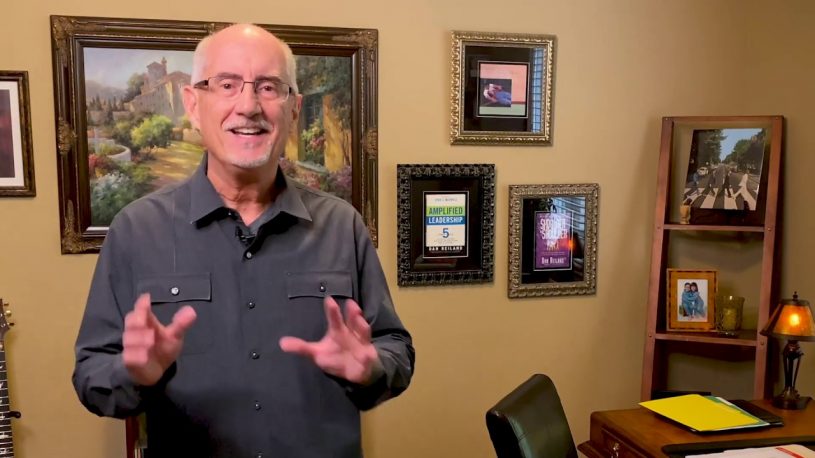Note From Dan: I’d like to introduce you to my long-time friend Jim Tomberlin. He’s one of the sharpest leaders I know and has written a guest post for us today on church mergers.
Jim pastored a church in Germany, grew a megachurch in Colorado and pioneered the multisite strategy for Willow Creek Community Church in Chicago (2000-2005).
He then founded MultiSite Solutions and has served hundreds of churches grow stronger through intensive multisite and church merger consultation.
In 2019 Jim merged MultiSite Solutions with Tony Morgan and The Unstuck Group to expand its capacity to assist more churches.
Home base is Colorado Springs, but Jim spends half his time serving as the Chief of Staff at Christ Fellowship in Miami, Florida. Jim and his wife Deryl love traveling, hiking, and spending time with their three grown children and eleven grandchildren. And of course, Jim is a Denver Bronco fan!

Guest post by Jim Tomberlin:
I stumbled into my first church merger experience accidentally in 2003 (and if you have a merger experience, I’ll end this short article asking you to share it).
Looking for a place to plant a regional campus for a Chicago suburban church, I came across a school in a great location. But another church was already meeting there. I left my card and told them that if that church ever leaves, call me.
I got a call, but it wasn’t from the school. The church phoned and said, “We don’t have a pastor. Can we join you?’”
I responded, “I’m not sure that’s a good idea.”
I tried to dissuade them, but they insisted.
Eventually, I gave in. With 150 church members from my church, combined with the 150 people already in the school, we relaunched as a new church. Fifteen years later, it has grown to 2,000 regular attendees.
When I went back for the 10th anniversary, of the original 150, about 125 were still there. They told me it was the greatest thing that ever could have happened to them.
In 2011 I co-authored a book with Warren Bird, Better Together: Making Church Mergers Work, about the emerging church merger trend that I had experienced firsthand (and maybe you have too!).
We described how these new kinds of mission-driven mergers were different than the survival-based mergers of the past. We also observed that many of these mergers were an unintended but positive consequence of the multisite church movement.
Since then, we have seen an explosion of all kinds of church mergers beyond multisite outcomes. More church leaders are seeing mergers as a church-plant strategy, pastor-search strategy, succession strategy, community transformation strategy, and denominationally driven revitalization, and replant strategy.
Here are some learnings that you need to know if you are considering a merger.
- All mergers are not alike. Most are rebirths (fully absorbed), few are marriages (healthy re-alignment of equals), many are adoptions (full integration), and the least successful are ICU mergers (union of two dying churches on life-support).
- The majority of church mergers are between a “lead” church (usually larger and healthier) and a “joining” church (generally smaller) rather than between two equal churches.
- The majority of mergers involve a name change, usually of the joining church.
- The majority of mergers occur within 30 minutes driving distance of one another.
- The majority of church mergers retain the senior pastor of the joining church but usually in a different role than campus pastor.
- The majority of mergers are initiated by the joining church, but this is changing.
- The average length of the merger process beginning with the initial conversation to merger completion: 7 months.
- Half of all mergers involving two facilities become multisite, a fourth sell a facility and a fourth use the facility for other purposes.
- Mergers that become multisite report a higher rate of success & satisfaction than those who become monosite.
- The majority of mergers take a vote at both churches with an 80-100% “yes” response.
A decade later, with a seismic culture shift in church attendance and changing attitudes towards local churches, it’s time to do another nation-wide, comprehensive survey on church mergers to capture the trends in these new developments. We want to discover things like:
- “__% of church planters acquired their facility through a merger.”
- “__% of mergers say a goal of reproduction motivated them — to help birth new churches.”
- “__% of attendees retained post-merger.”
- “__% of denominational and non-denominational mergers.”
- “__Reasons for failed merger conversations or mergers that ended in divorce.”
TAKE THE CHURCH MERGER SURVEY!
If your church has experienced a merger–or unsuccessfully attempted a merger in the past–would you give us your take on our church merger survey?
In partnership with The Unstuck Group, Leadership Network, ECFA, Fortress Press, and others, we are offering several incentives for church leaders to take our survey and to forward it to others who have a church merger experience. Plus we’re planning a free webinar to survey participants to reveal and discuss the initial findings from the survey.
Just go to this link and tell us your thoughts about mergers. As one of the many ways we’ll say thanks, we’ll also email you a summary of what everyone else said.
Thank you.
Jim Tomberlin, lead author of Better Together: Making Church Mergers Work
Questions? Contact DrBirdAssistant@gmail.com



